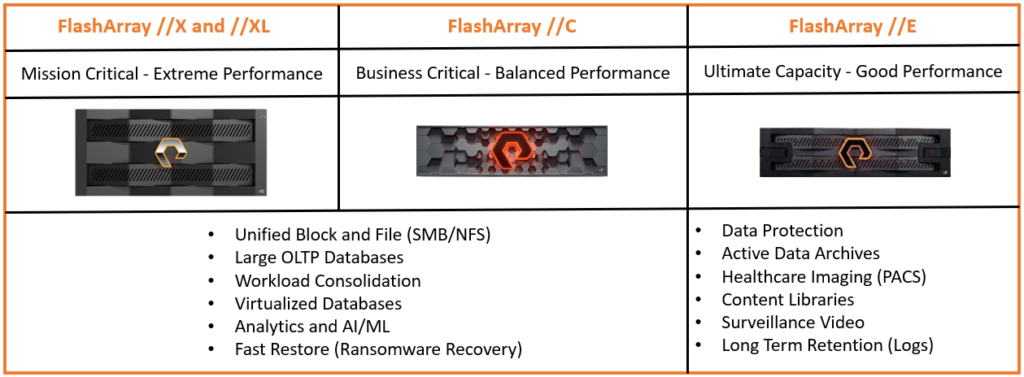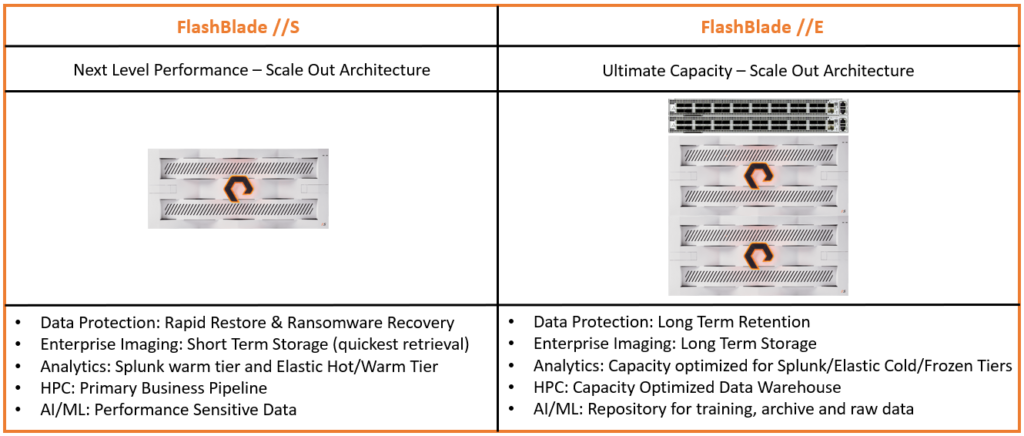With the recent announcement of the //E lineup, how do you confirm which array fits best for which workload?
I think that is a common question everyone is asking lately, so I tried to simplify it with the illustrations below.
Block and File (Unified) Storage

Unified Fast File and Object (UFFO) Storage

Some caveats I would like to point out below:
- FlashArray Series (Block, NFS, SMB)
- FlashArray //X20 minimum capacity starts at 22TB RAW and 3RU of Physical Space
- FlashArray //XL130 minimum capacity starts at 90TB RAW and 5RU of Physical Space
- FlashArray //C minimum capacity starts at 240TB RAW and 3RU of Physical Space
- FlashArray //E minimum capacity starts at 1050TB RAW and 3RU of Physical Space
- FLashBlade Series (NFS, SMB, Object S3)
- FlashBlade //S minimum configuration requires a minimum of 7 blades in the chassis
- FlashBlade //S minimum capacity starts at 168TB RAW and 5RU of Physical Space
- FlashBlade //E minimum configuration requires two chassis (20 blades) with two Fabric Switches
- FlashBlade //E minimum capacity starts at 3856TB RAW and 12RU of Physical Space
- FlashBlade //S has two sub-models being offered, S200 and S500.
- S200 provides best balance between performance and capacity (very high compressions)
- S500 provides extreme performance with less efficiencies (high compression)



